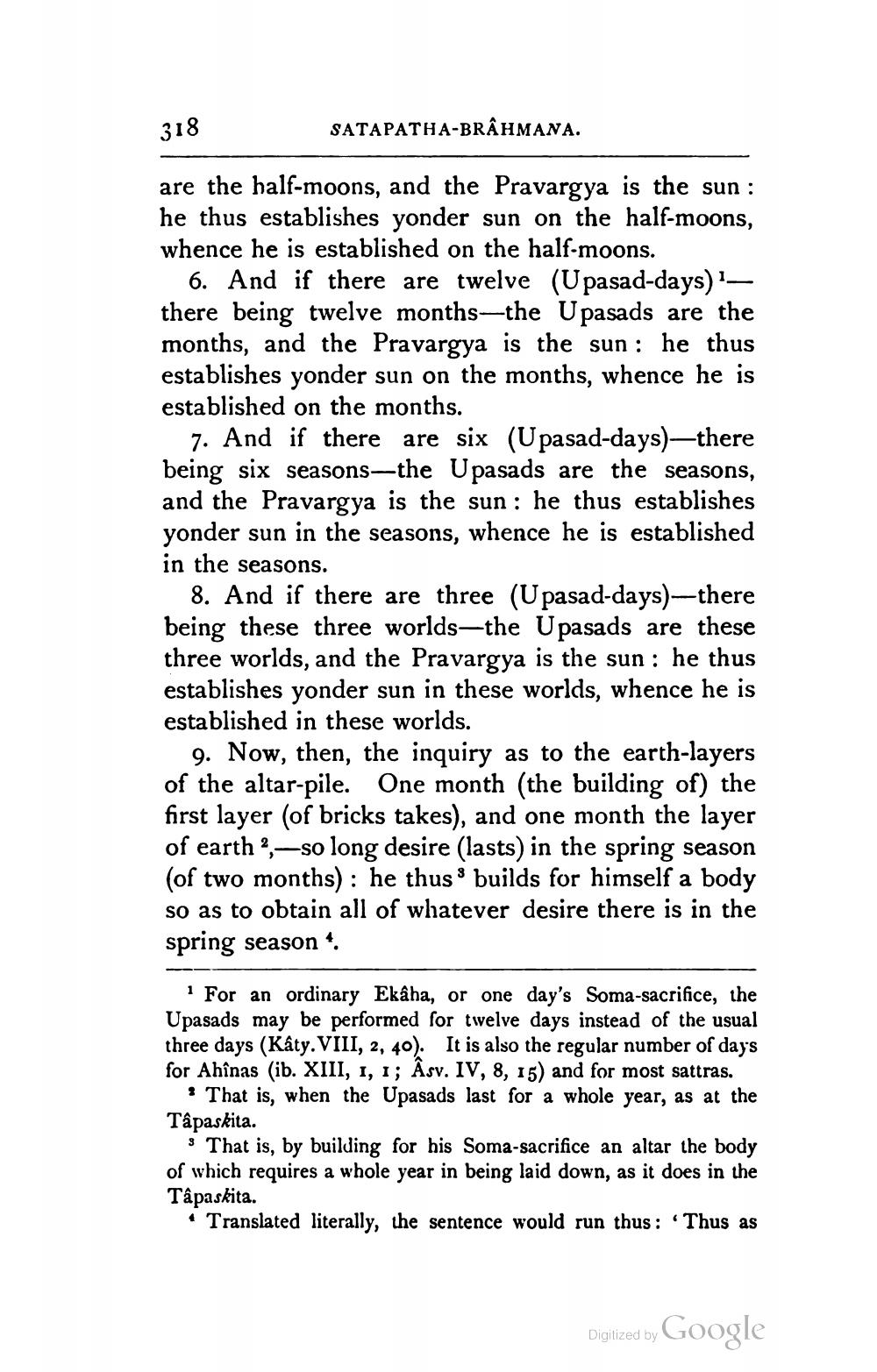________________
318
SATAPATHA-BRAHMANA.
are the half-moons, and the Pravargya is the sun : he thus establishes yonder sun on the half-moons, whence he is established on the half-moons.
1_
6. And if there are twelve (Upasad-days) 1there being twelve months-the Upasads are the months, and the Pravargya is the sun: he thus establishes yonder sun on the months, whence he is established on the months.
7. And if there are six (Upasad-days)—there being six seasons-the Upasads are the seasons, and the Pravargya is the sun: he thus establishes yonder sun in the seasons, whence he is established in the seasons.
8. And if there are three (Upasad-days)—there being these three worlds-the Upasads are these three worlds, and the Pravargya is the sun: he thus establishes yonder sun in these worlds, whence he is established in these worlds.
9. Now, then, the inquiry as to the earth-layers of the altar-pile. One month (the building of) the first layer (of bricks takes), and one month the layer of earth 2,—so long desire (lasts) in the spring season (of two months): he thus builds for himself a body so as to obtain all of whatever desire there is in the spring season.
For an ordinary Ekâha, or one day's Soma-sacrifice, the Upasads may be performed for twelve days instead of the usual three days (Kâty. VIII, 2, 40). It is also the regular number of day's for Ahînas (ib. XIII, 1, 1; Âsv. IV, 8, 15) and for most sattras.
That is, when the Upasads last for a whole year, as at the Tâpaskita.
3 That is, by building for his Soma-sacrifice an altar the body of which requires a whole year in being laid down, as it does in the Tâpaskita.
• Translated literally, the sentence would run thus: 'Thus as
Digitized by
Google




